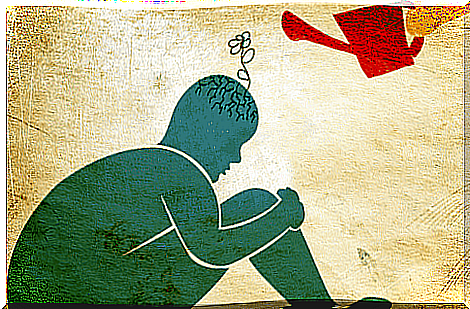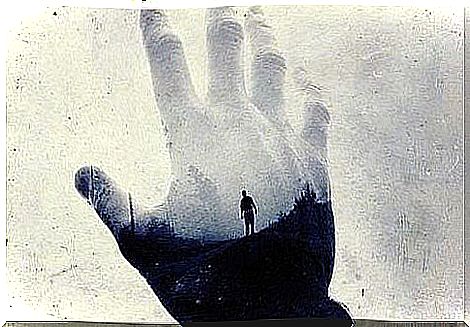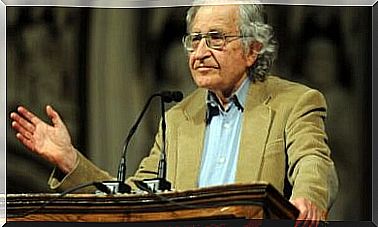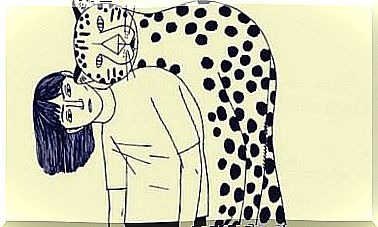Pillars Of Jungian Therapy To Treat Anxiety

The approach to Jungian therapy for the treatment of anxiety follows a central premise. Our thoughts and beliefs can become our worst enemies, especially if we resist or do not know how to deal with what worries and paralyzes us. But getting to the root of our problems and accepting them can allow us to free ourselves from them and what they represent to us.
If there is one word that can define Jung’s psychological approach, it is self-realization. This is something that always differentiated Jung’s views from Freud’s. He believed that people were always oriented towards a simple goal: to be able to fulfill themselves as human beings.
But everyone suffers from anxiety. The reason for this always seemed clear to Jung. To him, the world does not always seem like a safe place.
Social environments, institutions, authorities and even the current of modernity that surrounds us do not constitute a favorable scenario in our eyes. Things like dissatisfaction, the feeling of not being free, and that we can not completely complement ourselves, are all added to the constant feeling of insecurity. External pressure divides us on the inside, and instead of assuming the internal tension, we resist in a stoic way.
Carl Jung once said something worth remembering: What you resist continues .

To treat anxiety according to jungian therapy
Jungian therapy is a specialized form of psychotherapy where the method is different from those in cognitive-behavioral or humanistic psychotherapy. In fact, universities like the University of California, Berkeley, have been training students in this approach for more than 40 years.
This psychotherapy presents some interesting pillars worth considering if you are wondering if it is actually effective in treating anxiety.
Anxiety is a human characteristic, but it is important to individualize it
To prove an idea, Jungian therapy talks about concepts such as archetypes and the collective unconscious. Humans share a psychic substrate from which common elements that define us all come. This means that there are instincts, shadows and drives that we all share equally (according to this theory).
- Anxiety is like a blanket we walk on every day. It is a feeling full of suffering, which arises from what we previously discussed: the feeling of living in an environment that is not always safe.
- Now, although all people have this dimension in common, there is a fact that defines this approach that Jung clarified through analytical psychology: We are committed to individualizing ourselves, getting out of the structure we all share, and becoming autonomous and independent .
- People who live with anxiety every day must be able to define what they feel, what they perceive and, most importantly, what they need.
Jungian therapy uses a closed method, a dialectical procedure in which the therapist must be able to connect to the patient’s personality in order to favor their comfort and autonomy. They must be an active remedy in their healing process.

Recognition of the “shadow” or the deep roots of anxiety
Another pillar of this therapy that can treat anxiety is to find the original cause, the root of the problem that is causing the mental illness. This means recognizing our shadow and letting the darkest side of our personality come to the surface. In the same way, it is also important for the therapist to identify the patient’s affective complexes (needs, obsessions, feelings of admiration).
To achieve this, this method is based on the following strategies:
- Conversation processing.
- Interpretation of dreams.
- Association of ideas.
- Creative techniques.
Analyzing the unconscious, which is often fraught with problems, voids and neglected needs, is the key to recovery. That said, an alliance between the therapist and the patient must be established to properly work this complex mental structure.
No more resistance: Approval to be free
Jungian therapy has only one purpose in treating anxiety: individualization. Favoring that mental and emotional autonomy requires that we have the opportunity to break resistance and stop the desire to flee from what worries or frightens us.
According to Carl Jung, the harder we work to put negative and threatening thoughts aside, the more power they will have over us.
- This is why refusing, resisting or resisting only aggravates the symptoms of anxiety. This will lead to more nerves, more restlessness and more agitation.
- Furthermore, Jungian therapy will try to guide us so that we can accept a very important aspect: understanding that anxiety is part of being human. This means that we must accept it without resistance. Now that does not mean we should let it control us. It would make us lose our self-control.

Find a purpose
Jungian therapy is aware that we sometimes use all our energy to treat anxiety. The chronic despair and lack of motivation that many people suffer from almost always has the same beginning: lack of purpose and not finding meaning in life.
This type of therapy provides the right means to help the person regain focus in life. In this way, the person will be able to construct their purpose based on their needs. This is a great way to soothe anxiety and redirect it to new personal goals.
Finally, Jungian therapy is always available if we want to use it to treat our anxiety. It restores our emotional balance from our unconscious, our blockages, our fears and our shadow.
It is important to note that today there are many different studies that confirm and support the effectiveness of Jungian therapy. Starting a psychotherapeutic journey that favors self-knowledge and personal freedom is always positive.








